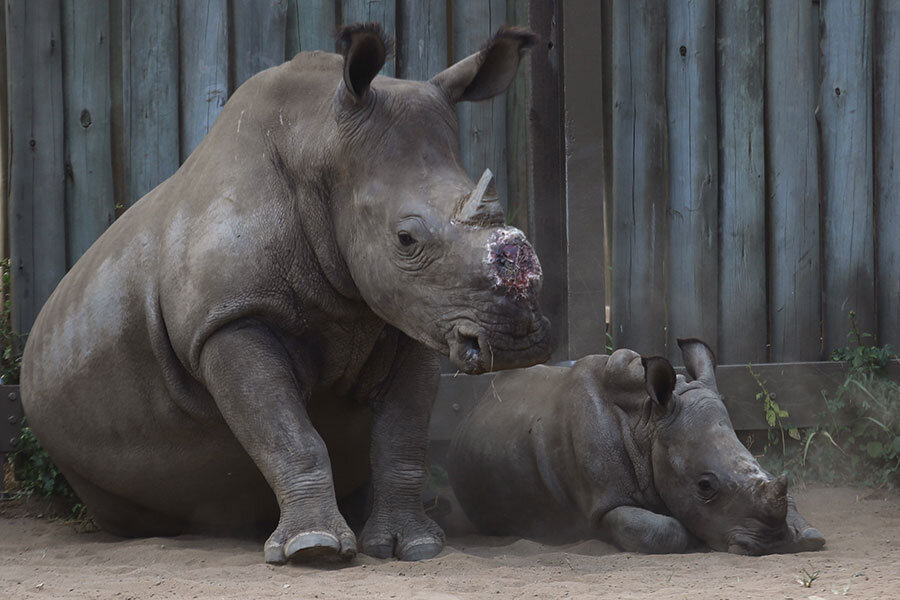Is controlled de-horning the answer to rhino poaching?
Loading...
| PIETERMARITZBURG, South Africa
Eager to stop wildlife poaching, some in Africa are taking the drastic step of de-horning rhinos before the illegal hunters do, taking a whining chainsaw to the hulking animals' most distinctive feature.
Earlier this week at the Gwahumbe Game Reserve, an 8-year-old white rhino named Vuyo was an unwilling participant. Shot in a hind leg with a tranquilizer dart, he ran off until the drug took effect. He was then blindfolded.
"So initially, we use a chainsaw to cut the horn off," said wildlife veterinarian Ryan Van Deventer. Experts say dehorning is quick and painless, similar to trimming a horse's hoof.
After slicing off the horn, he ground down the stump to make it smooth and to get rid of as much of the material as possible. An injection woke up the rhino a few minutes later.
"One has to try and minimize the appeal, the risk versus reward to the poachers," Dr. Van Deventer said.
About 20,000 southern white rhinos remain in the world, and most are in South Africa.
White rhinos are listed as a vulnerable species by the Convention on International Trade in Endangered Species, or CITES, and their plight will be discussed at the CITES meeting that begins this weekend in Johannesburg.
An international ban on rhino horn has been in place since 1977. But poaching continues, and an increasing number of the rhinos survive the attacks and need treatment for gunshot wounds or deep cuts from axes or machetes.
Record numbers of rhinos have been killed in South Africa in recent years to meet demand for their horns in parts of Asia, particularly Vietnam. Consumers believe rhino horn, which is ground into powder, has medicinal benefits, but there is no scientific evidence to support that.
Poachers killed 1,175 rhinos in South Africa in 2015, according to the government. Although rhino poaching is down this year, areas where it has increased include the provinces of KwaZulu-Natal, Free State, and the Northern Cape.
It's a regional problem. Zimbabwe's government has said it plans to de-horn the rhinos in national parks, though most of the country's 800 rhinos are in private reserves.
Although rhinos use their horns to access food and in social engagements, de-horning them has not been shown to be detrimental, the WWF conservation group said. Analysis from reserves in Zimbabwe has shown it to increase survival rates.
However, as the horn grows back, the process must be repeated every year or two. De-horning a single rhino can cost more than $1,200. Because of the costs, de-horning is not practical in very large populations, WWF said.
Experts like Van Deventer say de-horning alone will not stop the problem of poaching. Security is still needed, and wildlife groups have said some poachers kill de-horned rhinos to avoid wasting time tracking them in the future.
Some believe that listing white rhinos as an endangered species will give them more protection.
For years, this wildlife reserve in KwaZulu-Natal has been reluctant to allow Vuyo, its one prized white rhino, to be photographed, in the fear that his horn might attract poachers.
Vuyo's de-horning could result in more company for him, said Craig McKenzie, part of the management of the reserve.
"The biggest reason that we haven't purchased a mate for Vuyo is because of the threat of poaching," he said. "So if we stick to this policy of de-horning, we can more confidently go out there and get him a mate and build a herd."
___
Anna reported from Johannesburg. Associated Press writer Christopher Torchia in Johannesburg and photographer Tsvangirayi Mukwazhi in Harare, Zimbabwe, contributed.







